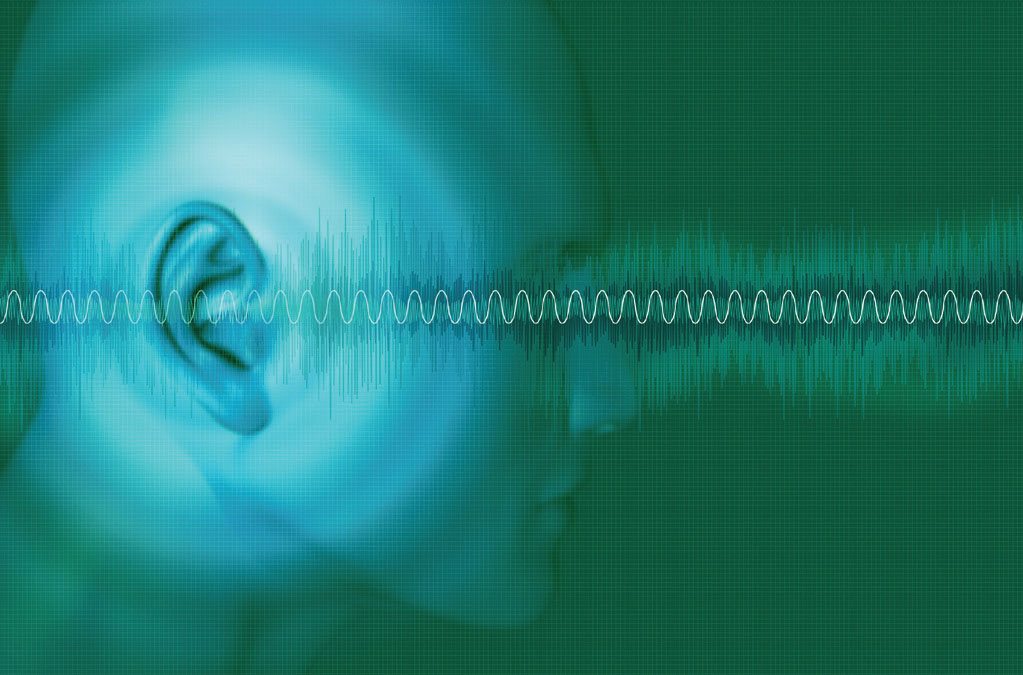It’s one of those debates that seems to go on forever, and has been discussed heavily in professional audio and hi-fi circles during the “digital era” that began in the early 1980s with the advent of the compact disc: Can people hear anything above 20 kHz?
And if so, does it matter?
As it turns out, this has been an important subject in scientific and medical circles for decades. In a 2003 article by Martin L. Lenhardt, Au.D., Ph.D. entitled Ultrasonic Hearing in Humans: Applications for Tinnitus Treatment, the author states “Human ultrasonic hearing has been independently ‘discovered,’ documented, and abandoned more than a dozen times over the last half century. So outlandish is the concept that humans can have the hearing range of specialized mammals, such as bats and toothed whales, that ultrasonic hearing has generally been relegated to the realm of parlor tricks rather than being considered the subject of scientific inquiry.”
In this particular article, the concept of treatment for hearing loss via the use of bone-conducted ultrasound is explored and offered as a viable option. In his summary, the author states: “Humans can detect ultrasound up to at least 100 kHz, but perception generally requires direct contact of the source with the body.” It reminds me of the movie Sound of Metal, which won an Oscar for Sound Mixing, and portrayed the dismal realities of cochlear implants.
As fascinating as this is, it’s not completely practical or even relevant for those of us in the professional audio field. But it’s more relevant than you might think.
Law Of Diminishing Returns
Of course, we should all be concerned about the future of professional audio and the consumer formats used by our ultimate customers. But at what point do these efforts start to create little or no benefit for the increased cost and complexity? (Don’t even start me on the format wars and the recent attempts at high bitrate playback…)
Let’s get one thing straight: consumers don’t really care if the original sampling rate was 44.1 kHz or 192 kHz. Most people probably wouldn’t notice even if it was 22.05 kHz! In fact, before the advent of the CD, the reigning consumer format was the cassette. Remember those things? Maybe you still have a few dozen or even a few hundred of them floating around, gradually becoming demagnetized audio horrors 1-7/8 inches per second at a time.
The compact cassette was never meant to be used for full-band audio, but instead was intended for speech only. But that didn’t stop it from becoming the number one format in terms of units sold during the decade between 1978 and 1988. There were even attempts in the 1970s to introduce improved versions of the cassette, with greater tape widths and faster tape speeds, all of which failed.
Dolby and dbx noise reduction offered improved signal-to-noise performance but unfortunately were not universally used or understood. Why was the cassette so popular? Simple: it was inexpensive, portable, robust, and recordable.
So what if the LP offered far superior audio quality if used properly? That last part is the key. For the average user, the LP was a fragile, expensive and frankly, crappy-sounding format that got worse with every play.
How many typical consumers did you know (or did your parents know) that had a truly higher-end LP playback system? Sure, the potential was there but only very seldom was it reached.
Ironically, only after the advent of the CD did the true potential of the LP emerge during its “Indian Summer” during the late 1980s and early 1990s. We’re even seeing yet another bump in LP sales today. But back in the day, the cassette sold in huge numbers well into the 1990s.
It was finally replaced by the CD – due to the superior audio quality. Wait! No, it wasn’t. It was replaced by the MP3 for the very same reasons that the cassette was popular in the first place: portability, recordability, and low cost. Remember Napster? Nah – probably before your time.
What brought about this radical change was the increase in speed and power of the personal computer, allowing for the heavy number crunching required to turn PCM files into the much smaller, compressed versions to save disk space and make Internet transfer practical. That’s right – MP3s were around for several years before the iPod came along.
Admittedly, the iPod made MP3s portable and truly user-friendly in the same way that the Sony Walkman did for the cassette. But the point is that sound quality was not what drove these formats, it was convenience features.
What About The In-Band Content?
And here’s the real kicker for our part of the industry, meaning professional sound reinforcement. I’ve mentioned this before, but it bears repeating: the equipment is rarely the problem in most of our situations. Sure, there are times when we are limited to using sub-standard or inadequate gear.
But hopefully we’re all wise enough to avoid those situations for the majority of our work. And at the same time, we all want our junior and less-experienced brethren to become increasingly savvier and demand proper equipment, proper set up time, and generally aim to produce better sound while being compensated properly.
Here’s the bottom line: Our problems aren’t the lack of super-wide-band system performance, but instead what we often don’t get right between 100 Hz and 10 kHz. That’s right, the 6.5-octave range in the middle of the approximately 10-octave range our hearing offers the youth among us.
And if we want to come right down to it, the super-critical part is between 200 Hz and 7 kHz. Looking at the Equal Loudness contours first detailed by Fletcher and Munson at Bell Labs, we know that by far, the human hearing system is most sensitive in this range, with a distinct peak centering on 3 to 4 kHz.
Of course, we want the bass to shake the walls, and the vocals to sparkle and the drums to pound everyone’s chest at the appropriate moments and the cymbals to shimmer. But really, if we can’t get things right between 200 Hz and 7 kHz, we aren’t doing our jobs properly.
Why is this range so important, beyond the obvious fact that our hearing system is most sensitive in this range? Well, first, this is where more than 98 percent of the vocal energy lies… and the drums and the guitars and the strings and the horns.
But the vocals are truly the most important thing, whether we’re doing a rock tour, a corporate event, or sound at a church. The audience can detect anomalies in the vocal sound much more readily than with any other source simply for the fact that we hear vocals in speech every single day unless we’re in solitary confinement.
And even then, we hear voices in our heads. How many crazy people claim to hear snare drums in their heads? How many claim to hear guitars in their heads? No, it’s voices! Like the one telling me right now that I’ve beat this dead horse plenty.
How It All Ties In
Which brings me to my last point: that hearing loss and the sound reinforcement industry are not unrelated. How many of us already show signs of some loss, or of tinnitus? I’ll bet more than a few, including myself, have this problem. And what about the people who attend our events?
Hopefully we, and our audiences, won’t be so bad off after a few years listening to our mixes that they need some kind of ultrasonic system installed in their heads in order to hear the first words of their grandchildren.
So instead of concentrating on “digital vs. analog” and whether or not our microphones reproduce signals up past 50 kHz, let’s worry about what really matters: Good sound in the mid-band.















